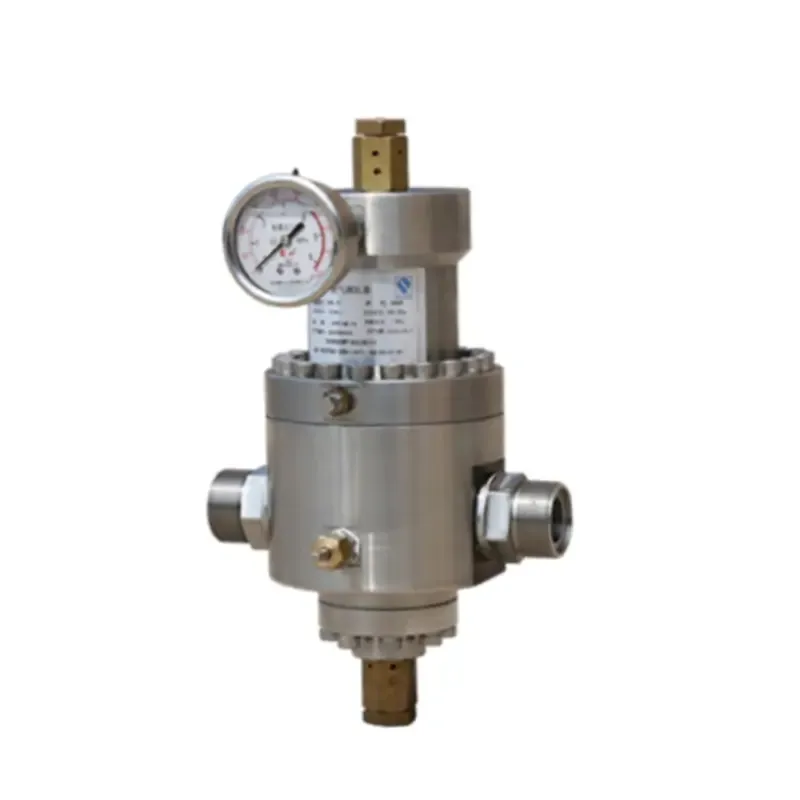
Dec . 29, 2024 21:25
Back to list
Heat Exchanger Applications for Natural Gas in Industrial Processes
Heat Exchangers for Natural Gas A Comprehensive Overview
In the world of energy and industrial processes, heat exchangers play a crucial role in the efficient management of thermal energy. When it comes to natural gas, the application of heat exchangers becomes even more critical due to the specific requirements of gas processing and distribution. This article delves into the functioning, types, and significance of heat exchangers in the context of natural gas.
What is a Heat Exchanger?
A heat exchanger is a device designed to transfer heat between two or more fluids while keeping them separate. The fluids may be liquids, gases, or a mixture of both. The primary goal of a heat exchanger is to enhance energy efficiency by recovering waste heat from one fluid and transferring it to another that requires heat. This process is essential in various applications, from power generation and HVAC systems to chemical processing and food and beverage production.
Types of Heat Exchangers
There are several types of heat exchangers commonly used in natural gas applications
1. Shell and Tube Heat Exchangers These consist of a series of tubes, one set carrying the hot fluid and another carrying the cold fluid. They are widely used in the oil and gas industry for their robustness and effectiveness in handling high pressure and temperature.
2. Plate Heat Exchangers Made up of multiple thin plates stacked together, these exchangers provide a large surface area for heat transfer. They are particularly efficient for heating and cooling applications with lower viscosity fluids, making them suitable for various gas processing plants.
المبادل الحراري للغاز الطبيعي

3. Air-Cooled Heat Exchangers In situations where water is scarce, air-cooled exchangers can be utilized. They use ambient air to cool or heat the fluids and are often used in natural gas processing facilities located in remote areas.
4. Double Pipe Heat Exchangers This type involves one pipe inside another, with one fluid flowing through the inner pipe and the other around it. While they are simpler, their heat transfer efficiency is generally lower than other types.
Importance in Natural Gas Applications
The use of heat exchangers in natural gas applications cannot be overstated. Firstly, they are integral to the liquefaction process, where natural gas is cooled to a liquid state for easier storage and transportation. Effective heat exchange is essential to minimize energy consumption and operational costs in this phase.
Additionally, heat exchangers are crucial in the dehydration of natural gas. Removing water vapor is essential to prevent pipeline corrosion and ensure safe transport. Heat exchangers help in condensing water vapor from the gas stream, improving the overall quality of the natural gas.
Furthermore, during the regeneration of desiccants used in dehydration processes, heat exchangers play a key role in transferring heat, enhancing the efficiency of the regeneration cycle and reducing energy input.
Conclusion
In conclusion, heat exchangers are vital components in the natural gas industry, facilitating efficient heat transfer in various stages, from processing to transportation. With the increasing demand for energy and the need for sustainable practices, the development and implementation of advanced heat exchanger technologies are crucial. By optimizing heat transfer processes, we can not only improve operational efficiency but also contribute to greener energy solutions. As the natural gas sector continues to evolve, heat exchanger technology will undoubtedly remain at the forefront of innovations aimed at enhancing performance and sustainability.
Next:
Latest news
-
Safety Valve Spring-Loaded Design Overpressure ProtectionNewsJul.25,2025
-
Precision Voltage Regulator AC5 Accuracy Grade PerformanceNewsJul.25,2025
-
Natural Gas Pressure Regulating Skid Industrial Pipeline ApplicationsNewsJul.25,2025
-
Natural Gas Filter Stainless Steel Mesh Element DesignNewsJul.25,2025
-
Gas Pressure Regulator Valve Direct-Acting Spring-Loaded DesignNewsJul.25,2025
-
Decompression Equipment Multi-Stage Heat Exchange System DesignNewsJul.25,2025

